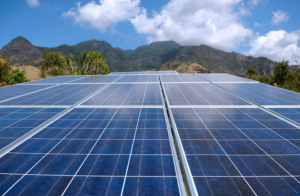Renewable Energy in Yemen
 The United Nations Development Programme reported that only 40% of Yemeni households had access to electricity in 2021, primarily due to a severely damaged grid resulting from years of unrelenting war. Innovations in renewable energy in Yemen hold the potential to offer a sustainable solution to the immense human suffering caused by the lack of reliable electricity.
The United Nations Development Programme reported that only 40% of Yemeni households had access to electricity in 2021, primarily due to a severely damaged grid resulting from years of unrelenting war. Innovations in renewable energy in Yemen hold the potential to offer a sustainable solution to the immense human suffering caused by the lack of reliable electricity.
Energy Crisis
In 2020, Yemen’s big cities experienced up to 20 hours of blackouts per day while the poorest and most rural Yemenis suffered even more. Renewable energy in Yemen has not become widespread enough to entirely make up for oil and diesel-based energy, resulting in reduced agricultural productivity. Businesses struggle to operate without reliable power, hindering the country’s economic recovery.
Yemen’s electric grid is dependent upon expensive, imported oil that the country sources unreliably. For example, in September 2022, a Saudi refusal to allow oil tankers to enter Yemen’s Hodeidah port resulted in a severe energy crisis. Prices of electricity, foodstuffs and transportation soared, while economic activity ground to a halt. Rural farmers who relied on diesel to run their water pumps and irrigate their fields suffered greatly as the price of 20 liters of diesel rose from $4 in 2015 to $35 in 2022.
For those who do not want to rely on the public electricity grid, alternatives include subscribing to a private diesel-powered grid or using kerosene lamps, diesel generators, or personal solar panels to fill the gaps. But these systems are expensive and cheaper, low-quality versions often break down after just a few months, according to the World Bank.
Innovative Solutions
New innovations demonstrate the potential for addressing Yemen’s urgent need for more reliable and affordable energy. Yemen has access to a vast, untapped power source that can solve both of these problems: solar energy.
A significant portion of Yemen’s population has already adopted solar energy and its potential for further expansion is substantial. According to a 2018 analysis by the World Economic Forum, Yemen possesses the highest average solar energy potential among water-stressed countries due to the strength and concentration of sunlight.
International organizations like the World Bank have invested millions of dollars to finance the sustainable expansion of solar power.
The United Nations project “Enhanced Rural Resilience in Yemen” developed an innovative, affordable solar microgrid and funded its installation in three communities in 2020. As reported by the United Nations Development Programme, these microgrids significantly reduced the cost of energy, from 42 cents an hour to two cents an hour.
Solar microgrid projects have empowered young Yemeni women to set up infrastructure in their communities and increased school enrollment through solar-powered schools. Farmers have used solar power to pump water to keep their plants alive and health centers to power refrigerators.
The U.N. program also provided training to women and youth, allowing them to establish and maintain microgrid businesses to provide for their families, which had the added benefit of elevating their social status in their communities.
Broader Implications
This project is an example of development aid, which, in contrast to cash aid, builds sustainable self-reliance. It proves renewable energy in Yemen is a practical, important solution to many of Yemen’s electricity problems and shows how other countries and communities can follow in their footsteps.
Beyond benefiting the people of Yemen, more affordable renewable energy also contributes positively to the environment. As of August 2021, renewable energy in Yemen has already prevented 26,203 tons of carbon dioxide emissions from being released into the atmosphere and this figure continues to grow.
– Mitra Nourbakhsh
Photo: Flickr
